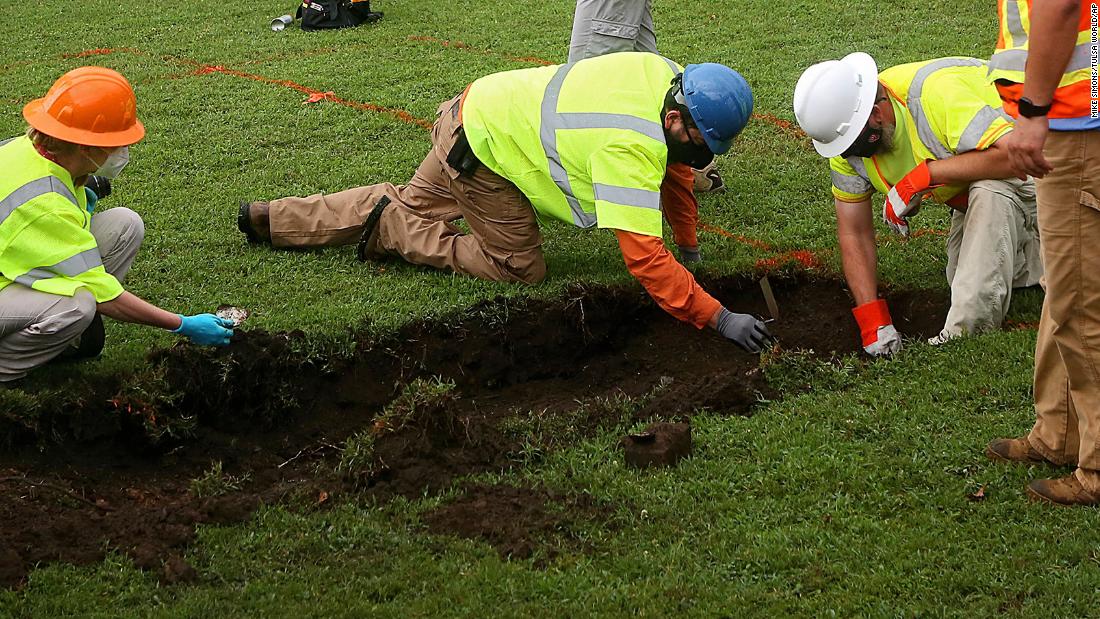
The test excavation conducted Monday is part of a study to determine if there are human remains in the area and, if so, in what condition they are found. It was discontinued in March due to the coronavirus pandemic.
“Our work continues to find the graves of our fellow Tulsans who disappeared during the 1921 Tulsa Race Massacre. Today, we begin a test excavation at Oaklawn Cemetery to determine what is causing an underground anomaly found by early geophysical exploration conducted of this year”. Tulsa Mayor GT Bynum said on Facebook.
“Because the scan is consistent with a mass grave, a team of some of the nation’s top researchers has gathered in Tulsa to assess both the presence and condition of human remains at the site in question.”
During the excavation, the Oaklawn Cemetery, where a survey found unmarked graves, as well as large areas apparently human-excavated that are likely mass graves, is closed to the public. Excavation is expected to take three to six days.
About the massacre
The Tulsa racial riot of 1921, also called the Tulsa racial massacre, resulted in the deaths of hundreds of African-American residents of the city’s Greenwood district, then a black economic center also known as Black Wall Street, when a crowd of protesters Whites looted and burned the community.
Historical accounts say the violence was sparked by a confrontation between a black resident and a white man who was part of a group of angry white residents demanding the lynching of a young black man. A conflict between the two men resulted in a fight for the white man’s weapon. Finally, the white man was shot and a white mob began to storm the neighborhood.
An estimated 10,000 white people were flooded into Greenwood, looting, burning, shooting, and, in some cases, bombarding black residents.
After the attack, 35 city blocks were burned, more than 800 people were injured and up to 300 people died, according to the Tulsa Historical Museum and Society.
The bodies were buried by strangers in mass graves while the families of the deceased were detained under martial law, said Scott Ellsworth, a University of Michigan historian who worked on the recovery of the Tulsa riot graves in December.
Families were never told if their loved ones died or where they were buried, and there was no funeral, he added.
The city created a Facebook page with live videos and updates on the excavation.
“In Tulsa, if you are killed, we do everything we can to find out what happened and do justice to your family,” Bynum said. “It shouldn’t have taken us 99 years to get to this point in the investigation. But this generation of Tulsans is committed to being a better city and doing the right thing for the victims. We will follow the truth wherever it takes us.”
CNN’s Kay Jones, Elizabeth Wolfe and Saeed Ahmed contributed to this report.
.
Related
